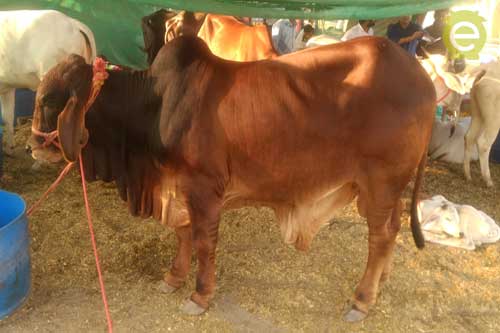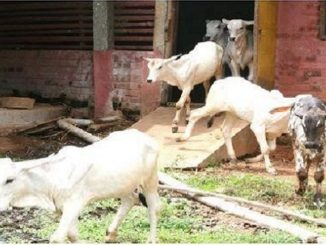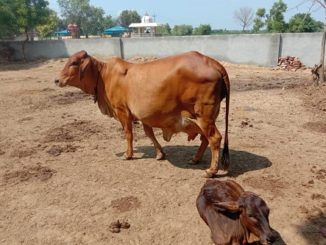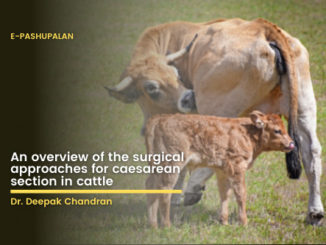Abstract
Although all vitamins are equally important in supporting animal life but vitamin A may be considered the most important vitamin from a practical standpoint as its different forms having some typical role in animal body. We all know about the role of vitamin A in vision but rather than this vitamin A is essential for maintenance of epithelial surfaces of male genital tract, spermatogenesis, immunity, cellular differentiation, growth and reproduction which is also known as ‘anti-infective vitamin’.
Introduction
Macronutrients and micronutrients are the two major categories of nutrition. Macronutrients are nutrients that the body requires in large amounts, whereas micronutrients are nutrients that the body requires in small amounts. Macronutrients such as carbohydrates, lipids and proteins are most limiting nutrients in reproduction but apart from these, micronutrients (vitamins and minerals) are very much essential for optimum production and reproduction even though they required in minute quantity. These micronutrients especially vitamin A play an important role in sexual development and maintaining the reproductive status of bulls which improves the sperm production and bull fertility. As we know the vitamins are basic organic nutrient that are required for the normal functioning and development of the body. To function effectively, an animal’s body need the proper amount of vitamins. They can’t synthesis most vitamins in their bodies, at least not in sufficient amounts to meet their demands. Therefore, they must be obtained through the feed that they consumed. To fulfil the optimum requirement of breeding bull’s extra supplementation of vitamins is needed as it improves the sperm production and bull fertility (Roy et al., 2013).

Dietary manipulation of a number of other vitamins also affects reproductive function. Bulls fed ration deficient in vitamin A have delayed puberty, reduced libido and reduced spermatogenesis (Cooper et al., 1987). The recommended level of vitamin A requirement is 80 IU/kg BW for growing animals and 100 IU/kg BW for adult cattle (ICAR, 2013). However, the exact role of vitamins and their requirements in reproductive tissues in breeding bulls are not well defined. Hence, level of different vitamins requirement in breeding bulls and their importance in male reproduction and semen quality needs to be elucidated. Therefore, present article has mainly designed to know the role of supplementation of vitamin A in breeding bull’s reproduction and spermatogenesis.
Vitamin A and Reproduction
Although all vitamins are equally important in supporting animal life but vitamin A may be considered the most important vitamin from a practical standpoint. In 1913, vitamin A was discovered to be the first fat-soluble vitamin. Vitamin A itself does not occur in plants, however, its precursors (carotenoids) are found in plants and these can be converted to true vitamin A by a specific enzyme located in the liver and intestinal wall of animals (Gräslund et al., 2008). Also, animal-derived foods contain retinol in an easily digestible and absorbed form, while plant-derived foods contain carotenoids which acts as precursors of vitamin A. Three different forms of vitamin A are active in the body: retinol, retinal and retinoic acid. These are known as retinoids. The cells of the body can convert retinol and retinal to the other active forms of vitamin A as needed. Each kind of vitamin A has a distinct function. Retinol supports reproduction and is the major transport form of the vitamin. Retinal is active in vision and is also an intermediate in the conversion of retinol to retinoic acid while retinoic acid acts like a hormone, regulating cell differentiation, growth and embryonic development (Dome and Knutson, 2011). The recent discovery of retinoic acid and retinoid X receptors has provided a molecular basis for the action of vitamin A and its metabolites at the level of gene activation.
Role of Vitamin A in Male reproduction
In general, vitamin A is essential for maintenance of epithelial surfaces of male genital tract, spermatogenesis, immunity, cellular differentiation, growth, reproduction and vision which is also known as ‘anti-infective vitamin’. Regarding the animal male reproduction, there is general agreement among investigators that prolonged vitamin A deficiency, results in the degeneration of the germinal epithelium of the testes in sexually mature bulls and that lowered fertility or sterility results (Hogarth and Griswold, 2010). The block in spermatogenesis caused by vitamin A deficiency (VAD) is illustrates in figure 1.

Figure 1. Spermatogenesis in the breeding bull. Spermatogenesis takes place in the seminiferous epithelium of testis tubules from puberty through adulthood. Undifferentiated (A-type) spermatogonia at the base of the seminiferous epithelium divide mitotically until they enter the differentiation pathway to become A1 spermatogonia. A1 spermatogonia undergo division to A1–A4 and finally B spermatogonia. B spermatogonia divide to produce preleptotene (primary) spermatocytes that migrate away from the base of the seminiferous tubule to undergo meiosis. The first meiotic division produces secondary spermatocytes and after the second meiotic division, spermatids (haploid cells) begin the differentiation process (spermiogenesis) to spermatozoa. In vitamin A deficiency, the transition from A to A1 spermatogonia is blocked (Pelt and Rooji, 1990).
Also, so many works in male animals proved that, vitamin A deficiency ceases spermatogenesis by blocking spermatogonia stage as well it replaced epithelia of the epididymis, prostate and seminal vesicle with stratified squamous keratinizing epithelium. Although when vitamin A is supplemented, spermatogenesis can be reinstituted by boosting A to A1 spermatogonial differentiation in a coordinated way (Morales et al., 1987).
Conclusion
Vitamin A having significant role in breeding bulls as it maintains the epithelial surface of male genial tract, regulate the process of spermatogenesis and also helps in growth and immunity. Therefore, supplementation of vitamin A with the optimum requirement in breeding bulls stimulates and maintain the process of spermatogenesis.
References
- Clagett-Dame, M., & Knutson, D. (2011). Vitamin A in reproduction and development. Nutrients, 3(4), 385-428.
- Cooper, D.R., Kling, O.R. and Carpenter, M.P., 1987. Effect of vitamin E deficiency on serum concentrations of follicle-stimulating hormone and testosterone during testicular maturation and degeneration. Endocrinology, 120(1), pp.83-90.
- Gräslund, S., Nordlund, P., Weigelt, J., Hallberg, B. M., Bray, J., Gileadi, O., & Gunsalus, K. C. (2008). Protein production and purification. Nature methods, 5(2), 135-146.
- Hogarth, C. A., & Griswold, M. D. (2010). The key role of vitamin A in spermatogenesis. The Journal of clinical investigation, 120(4), 956-962.
- ICAR (Indian Council of Agricultural Research), 2013. Nutrient requirements of cattle.
- Morales, C.; Griswold, M.D. Retinol-induced stage synchronization in seminiferous tubules of the rat. Endocrinology 1987, 121, 432–434.
- Roy, B., Baghel, R.P.S., Mohanty, T.K. and Mondal, G., 2013. Zinc and male reproduction in domestic animals: A Review. Indian Journal of Animal Nutrition, 30(4), pp.339-350.
- Van Pelt, A. M., & de Rooij, D. G. (1990). Synchronization of the seminiferous epithelium after vitamin A replacement in vitamin A-deficient mice. Biology of reproduction, 43(3), 363-367.
| The content of the articles are accurate and true to the best of the author’s knowledge. It is not meant to substitute for diagnosis, prognosis, treatment, prescription, or formal and individualized advice from a veterinary medical professional. Animals exhibiting signs and symptoms of distress should be seen by a veterinarian immediately. |







Be the first to comment